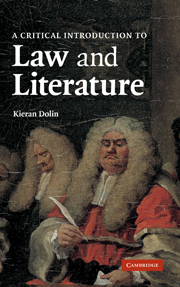Introduction to law and literature: walking the boundary with Robert Frost and the Supreme Court
Published online by Cambridge University Press: 05 June 2012
Summary
In April 1995 the American Supreme Court decided the case of Plaut v. Spendthrift Farm Inc. The case began in 1987 when Mr and Mrs Plaut and some other investors in Spendthrift Farm alleged that it had committed fraud and deceit when selling stock, contrary to Section 10(b) of the Securities and Exchange Act of 1934. The District Court in Kentucky held that this suit was time barred, following a recent Supreme Court decision in the case of Lampf which declared that such suits must be commenced within one year after the discovery of the facts constituting the violation and within three years of the violation itself. After this judgment became final, Congress enacted a new Section 27A(b) of the Securities and Exchange Act, providing that any action commenced before Lampf, but dismissed thereafter as time barred, could be reinstated. The Plauts moved for reinstatement accordingly, but the District Court held that Section 27A(b) was unconstitutional. This decision was confirmed by the Court of Appeal, and by the Supreme Court.
This case, like all legal cases, involves a story. While it begins as a story of disappointed investors attempting to obtain redress for a wrong that has damaged them, the conflict shifts onto a new level after the failure of the initial suit. With the attempted reinstatement, both Plaut and Spendthrift Farm in effect become proxies for a contest between the judiciary and Congress.
- Type
- Chapter
- Information
- A Critical Introduction to Law and Literature , pp. 1 - 16Publisher: Cambridge University PressPrint publication year: 2007



